| Article ID | Journal | Published Year | Pages | File Type |
|---|---|---|---|---|
| 3154194 | Journal of Oral and Maxillofacial Surgery | 2009 | 4 Pages |
PurposeThe purpose of this study was to determine whether there is a consensus among oral and maxillofacial surgeons and orthodontists as to the definition of centric relation.Materials and MethodsA survey constructed from 5 definitions of centric relation as provided from the “Glossary of Prosthodontic Terms” was sent to the chairpersons of every oral and maxillofacial surgery and orthodontic program in the United States. Only full-time faculty members from each program were asked to respond to the survey. The different responses were analyzed statistically by χ2 analysis and examined by use of 95% confidence intervals.ResultsWe received 73 responses from the oral and maxillofacial surgeons and 64 from the orthodontists. There were 69 different programs represented in this survey. Orthodontists and surgeons had a significantly different response regarding the definition of centric relation (χ2 = 28, df = 4, P < .0001). There was no difference between the 2 groups on the need for mounting models in centric relation for use in orthognathic surgery (χ2 = 1, P > .6). Regarding the definition of centric occlusion, there was a significant difference between orthodontists and surgeons (χ2 = 9.9, df = 1, P = .0070). The fourth and fifth questions had to do with centric relation/centric occlusion slide and the direction of movement. There was a significant difference between the 2 groups regarding mandibular movement (χ2 = 28, df = 2, P < .0001). Surgeons were nearly unanimous in their opinion that the mandible would move anteriorly (88%), whereas there was more discordance among orthodontists. Within the orthodontic group, 50% indicated anterior movement and 47% indicated that either an anterior or posterior movement could occur. The surgeons were asked 1 additional question that the orthodontists were not. Forty-nine percent of the surgeons indicated that during a bilateral sagittal split osteotomy, the proximal segment should be seated vertically and posteriorly before rigid fixation.ConclusionsThe results of this study show that there is a statistical lack of consistency among practitioners regarding an absolute definition of centric relation as it relates to orthognathic surgery. The inconsistency exists between specialties and within practitioners in each specialty.
